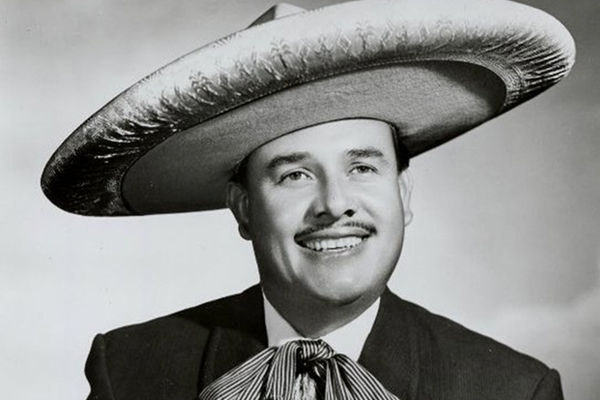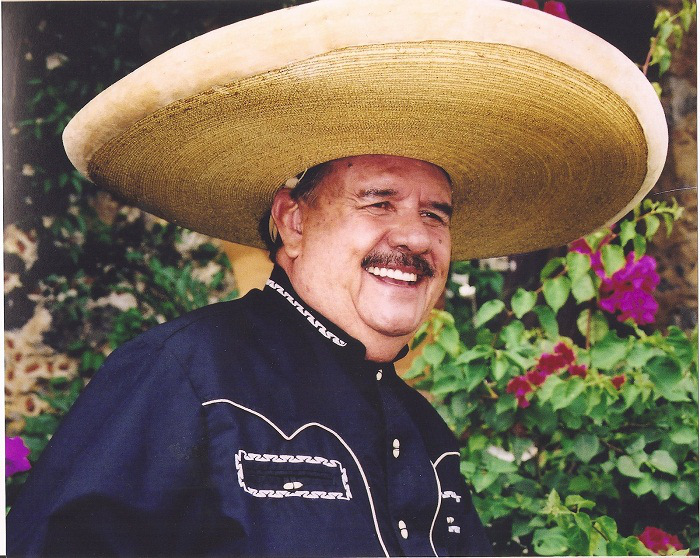Artist Biography: Ramón Ayala
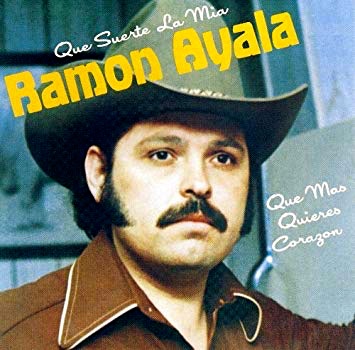 Accordionist, vocalist, and songwriter Ramón Ayala is a pioneer of norteño music who has sustained an active recording and performing career for almost half a century. As part of the trail-blazing duo Los Relámpagos del Norte, along with Cornelio Reyna, he defined the modern genre with signature songs and distinctive instrumental styling that have made him a superstar of the genre on both sides of the Rio Grande.
Accordionist, vocalist, and songwriter Ramón Ayala is a pioneer of norteño music who has sustained an active recording and performing career for almost half a century. As part of the trail-blazing duo Los Relámpagos del Norte, along with Cornelio Reyna, he defined the modern genre with signature songs and distinctive instrumental styling that have made him a superstar of the genre on both sides of the Rio Grande.
He was born Ramón Covarrubias Garza in the Colonia Argentina of Monterrey, Nuevo León, on December 8, 1945. At age 6, the future “King of the Accordion” learned to play norteño music’s emblematic instrument from his father, Ramón Covarrubias, a local musician. Inspired and supported by his parents, he performed in different public places to help support his modest family. His first band experience was with a group called Los Jilgueros (Goldfinches) de Marin, and he later joined Los Pavorreales (The Peacocks).
He was still an adolescent when a chance encounter in a cantina, where he first sought work as a shoeshine boy, put him on the road to early fame. At the city’s Bar Cadillac, he met bajo sexto player Cornelio Reyna, who was then part of a duo with Juan Peña called Carta Blanca. Later, when Peña left the group, Reyna invited Ayala to be his new partner. They launched a collaboration that in a few short years would change the sound of norteño music. They called themselves, appropriately, Los Relámpagos del Norte – The Thunderbolts of the North. The duo forged a distinctive sound and compiled a roster of songs that have since been covered by countless artists in contemporary Latin music. Unfortunately, there is little  information about the influential duo online, although loyal fans have created a community page for the act on Facebook.
information about the influential duo online, although loyal fans have created a community page for the act on Facebook.
After knocking on doors of several record companies, the Bego label of McAllen, Texas, finally gave the duo a chance to make its first record. That premiere single, “Ya no llores,” released in1964, became an instant hit, launching a chart-topping run that lasted eight years. (This video clip of the song, from a Mexican movie said to be set at the Bar Cadillac where the duo met, has more than 1.6 million views on YouTube.) Los Relampagos del Norte revolutionized norteño music, a genre that was then considered exclusively cantina music. They enlivened the music and lyrics in order to appeal to a wider audience, making a total of 20 albums together filled with hits that have become classics, such as “El disgusto,” “Devolución,” “Mi tesoro,” “Tengo miedo,” and many others. Many of those early recordings are included in the Frontera Collection, which has a total of 158 tracks by Los Relámpagos, the vast majority on the Bego label.
 In 1971, Cornelio Reyna left to pursue his own ranchero career. Though he was not as successful with mariachi music, he still continued to perform until his death in 1997 at age 56. Ramón Ayala, meanwhile, also set out on a solo career and immediately formed his own band, Ramón Ayala y sus Bravos del Norte, which also became a legend in the genre. By 1972, he was gaining renewed fame with his new vocalist, Antonio Sauceda, who also played bajo sexto. They signed with the U.S.-based label Marsol, making a new record every four months. In 1973, they were picked up by the DLV label in Mexico, which gave them their first smash hit, “Ni por mil puñados de oro” (Not even for 1,000 fistfuls of gold).
In 1971, Cornelio Reyna left to pursue his own ranchero career. Though he was not as successful with mariachi music, he still continued to perform until his death in 1997 at age 56. Ramón Ayala, meanwhile, also set out on a solo career and immediately formed his own band, Ramón Ayala y sus Bravos del Norte, which also became a legend in the genre. By 1972, he was gaining renewed fame with his new vocalist, Antonio Sauceda, who also played bajo sexto. They signed with the U.S.-based label Marsol, making a new record every four months. In 1973, they were picked up by the DLV label in Mexico, which gave them their first smash hit, “Ni por mil puñados de oro” (Not even for 1,000 fistfuls of gold).
However, that duo also broke up when Sauceda decided to join a Christian seminary. In 1974, Ayala teamed with a new lead singer, Eliseo Robles, who would stay with him for the next 14 years, marking what is considered the golden era of Los Bravos del Norte.
Robles had formerly played with Los Satelites de Fidencio Ayala, led by Ramón’s brother. During the Eliseo Robles years, the group’s album sales reached a peak in Mexico and the United States with hits such as “Un rinconcito en el cielo,” “Chaparra de mi amor,” “Tragos amargos,” and many others. Many of Ayala’s early DLV recordings can be found in the Frontera Collection, which includes a total of almost 200 recordings by Ayala and his band.
In the mid-’80s, Ayala found himself again without a lead singer when Robles left the band. Antonio Coronado became the fourth lead singer, but his tenure was short-lived, recording only eight albums with the group. In 1993, the fifth lead singer, Mario Marichalar, brought a new style to the band, appealing to a younger generation.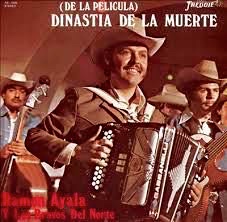
Ramón Ayala has been nominated for a total of 10 Grammy and Latin Grammy Awards. In 2001, he won a Grammy for his first live album, “En Vivo… El Hombre Y Su Música,” released by Sony. He has also won two Latin Grammys for the albums “Quémame Los Ojos” in 2001 and in the following year, “El Número Cien,” titled for his 100th album.
In 2003, Ayala celebrated his 40th anniversary in the music business. He has appeared in 13 movies alongside stars such as Antonio Aguilar and Cornelio Reyna and has recorded over 105 albums, a catalog that still steadily racks up sales of 750,000 units per year. He turns 70 this year but still performs at over 100 concerts annually in both Mexico and the U.S.
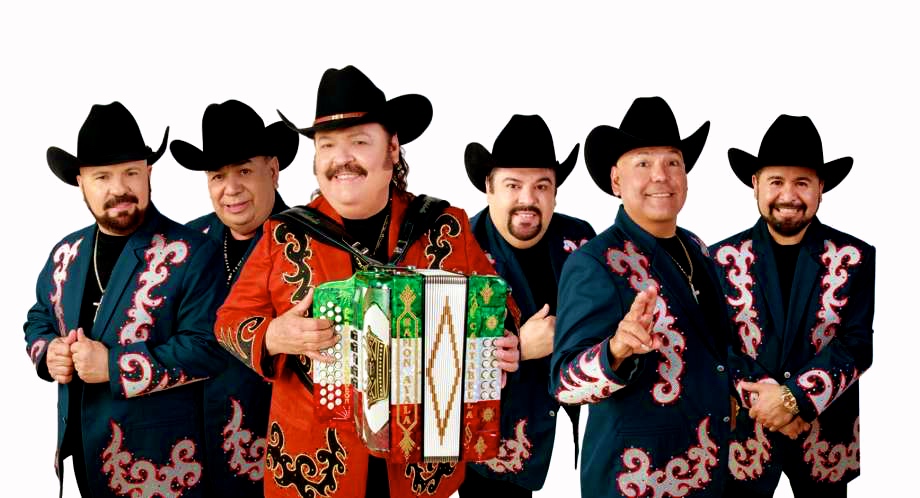 Ayala’s influence on modern norteño music continues to grow, as young musicians study and emulate his distinctive style. His enduring appeal is evident in recent performances where enthusiastic audiences sing along to memorized lyrics. It’s an appeal that cuts across generational lines, with young and old fans cheering side by side, as seen in this relatively recent concert clip of one of his signature songs, “Tragos Amargos” (Bitter Drinks). Fans exuberantly sing along with the memorable refrain, an emotionally charged melodic hook drenched in a distinctly Mexican sense of pathos, nostalgia, and yearning.
Ayala’s influence on modern norteño music continues to grow, as young musicians study and emulate his distinctive style. His enduring appeal is evident in recent performances where enthusiastic audiences sing along to memorized lyrics. It’s an appeal that cuts across generational lines, with young and old fans cheering side by side, as seen in this relatively recent concert clip of one of his signature songs, “Tragos Amargos” (Bitter Drinks). Fans exuberantly sing along with the memorable refrain, an emotionally charged melodic hook drenched in a distinctly Mexican sense of pathos, nostalgia, and yearning. 
The exact date and location of the concert is not identified, but there’s a clue in the video that clearly indicates the group is performing on the U.S. side of the border. At one point, the singer – with the same rasping, tequila-soaked vocal style that evokes the original Relámpagos – exhorts the crowd to belt out the famous chorus so they can hear it across the border: “¡Que se oiga hasta México!”
--Agustín Gurza
Blog Category
Tags
Images







